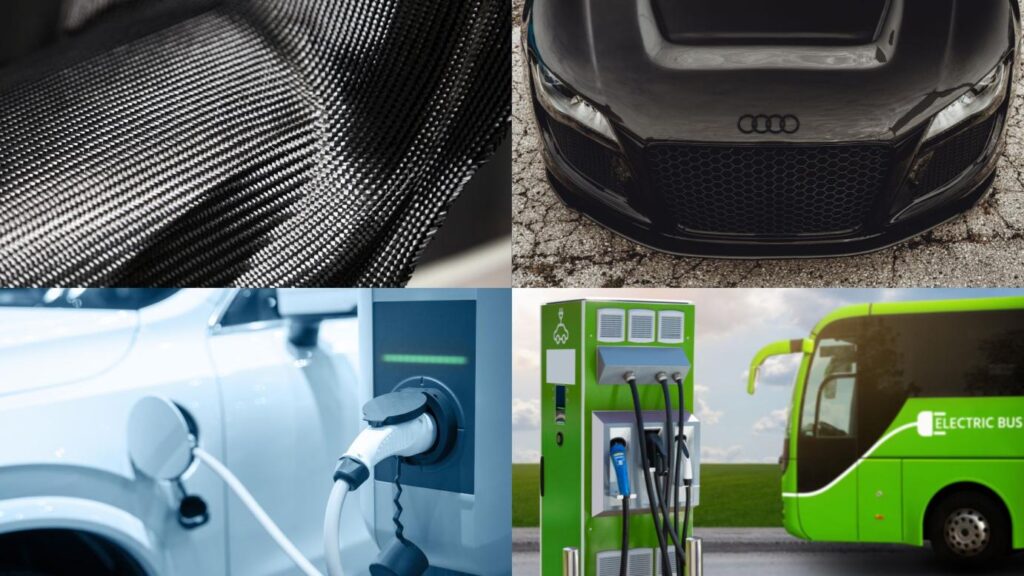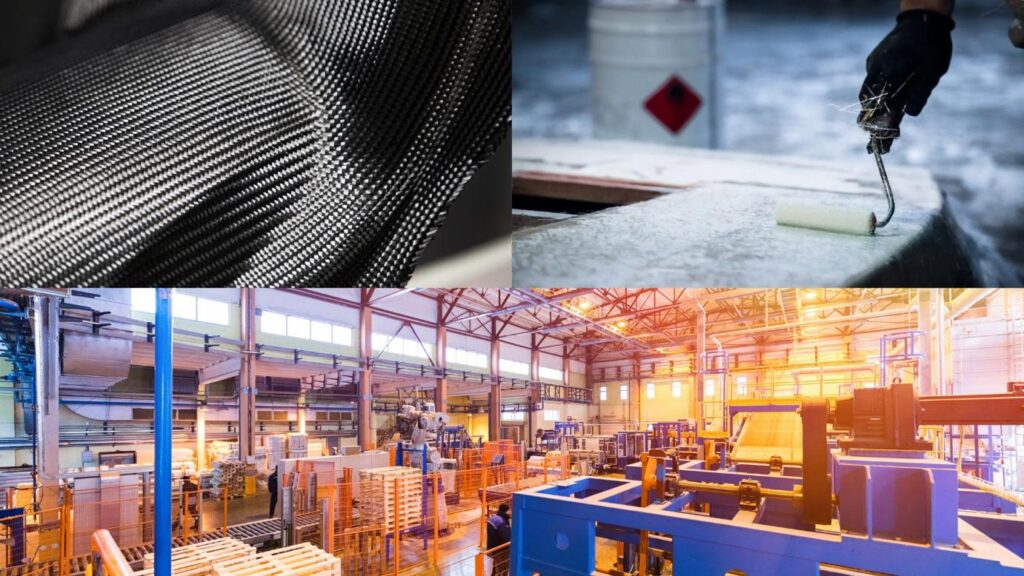Legacy pipeline infrastructure worldwide is under increasing strain. As pipelines age and demand rises, advanced composite pipes offer a revolutionary path forward. Nexa Pipe is at the forefront of realizing the full potential of high performance composite piping.
With game-changing capabilities, innovative manufacturing, and accelerating adoption across industries, Nexa Pipe represents the next generation of pipeline technology.
The Challenges for Critical Pipeline Infrastructure
Safe, efficient, and reliable pipeline networks provide the lifeblood for modern economies. But traditional pipeline materials face growing challenges:
- Ageing Networks: Much of the globe’s pipeline infrastructure was built over 50 years ago and nearing end of life. Failures, leaks, and ruptures are on the rise.
- Increasing Demand: Population growth, energy needs, industrialization, and improving standards drive infrastructure expansion and upgrades.
- Harsh Environments: New oil and gas discoveries in remote arctic, deepwater, and ecologically fragile regions strain current technology.
- Corrosion: Internal and external corrosion continues deteriorating pipelines, necessitating heavy maintenance, recoating, or replacement.
- Embrittlement and Cracking: Plastics like HDPE undergo slow crack growth over time, limiting their pressure rating and lifespan. Steel is prone to hydrogen embrittlement issues.
- Operational Hazards: Sparking, leaks, containment breaches, pumping inefficiencies translate into safety, environmental and economic impacts.
- Sustainability: Traditional pipeline materials and field construction methods have large carbon footprints. Short replacement cycles are wasteful.
These realities underscore the urgent need for next generation pipeline materials and solutions.
The Rise of Composite Pipes
Composite pipes fabricated from engineered advanced materials are offering breakthrough potential. Fibers like carbon, glass, and aramid are combined with polymer resins to create pipe with unprecedented properties:
- 5 times the strength of steel at a fraction of the weight
- Corrosion and chemical resistant
- Can be fabricated in situ into 500 meter segments
- Operates from -50°C to 85°C
- Handles pressures exceeding 1500 psi
- Smooth bore walls increase flow rates
- Non-conductive and non-sparking for safety
- Lower carbon footprint than incumbent materials
- Extended service life of 50+ years
These capabilities make composites highly advantageous for industries with extreme pipeline demands.
Manufacturing Breakthroughs
Innovative manufacturing is enabling cost-effective production of high performance composite pipes:
- Automated winding and molding processes
- Ability to construct specialized multi-layer pipe walls
- Mobile factories allow on-site field fabrication
- Mass production techniques reduce costs
- Quality control during manufacturing
- Built-in joining methods minimize field welding
- Lightweight pipes enable faster, lower cost installation
By fully controlling the manufacturing process, composite pipes can achieve optimized properties unattainable with field constructed steel or plastic alternatives.
Accelerating Industry Adoption
Double digit growth is forecast as leading firms and early adopters implement composite piping:
- Oil majors adopting for deepwater risers and arctic multi-phase lines
- Gas utilities for distribution systems to cut leaks
- Mining giants for slurry and process pipelines
- Power companies for district energy piping networks
- Major cities for water mains to curb corrosion and ensure quality
Many industries are approaching inflection points where the advantages of composites outweigh higher initial costs compared to traditional pipe materials.
Nexa Pipe: Pioneering the Future of Pipelines
Nexa Pipe is at the epicenter of the composite piping transformation, providing end-to-end solutions from manufacturing to installation.
Breakthrough Material Science
Proprietary polymers, nano-materials, and resin impregnation techniques enable tailored pipes with unprecedented performance.
Mobile Manufacturing Plants
Compact factories construct pipes on-site to exacting standards, enabling large 500 meter lengths.
In-Field and In-Factory Production
Pipes can be fabricated where needed through mobile plants or mass produced in dedicated facilities.
Purpose-Built Installation Machinery
Specialized trenchers, coil trailers, and crawler machines install composite pipe with speed and precision.
Complete System Integration
All aspects from materials to monitoring solutions provided for turnkey project delivery.
Strategic Industry Partnerships
Collaborating with leading firms to prove capabilities and achieve commercial scale.
The Future with Nexa Pipe
Composite piping is poised to transform pipeline infrastructure thanks to innovators like Nexa Pipe. Next generation materials, manufacturing, and digitization will expand possibilities further:
New Materials
Novel polymers, additives, and reinforcing fibers will enhance temperature, pressure, and permeability performance.
Optimized Construction
Automation, robotics, and 3D printing will enable mass produced low cost pipes with complex geometries.
Digitized Pipelines
Built-in sensors will provide monitoring, analytics, and asset health management in real-time.
Extended Capabilities
Bendable pipes, deepwater stability, and smart repair solutions will conquer new frontiers.
Sustainable Infrastructure
Composite piping will deliver verifiable emissions reductions, circularity, and enhanced ecological stewardship.
The future pipeline landscape looks radically different with composite innovation.
The Nexa Pipe Difference
What sets Nexa Pipe apart as the leader in enabling the composite piping future?
Proven Capabilities Today
Industry-leading composite pipe and relining solutions ready for onshore, offshore, surface, and subsea challenges.
Breakthrough Material Science
Patented polymers, resins, and nano-materials that overcome limitations of legacy pipeline materials.
Manufacturing Excellence
Highly optimized factories and mobile plants that set new quality, cost, and performance standards.
Unparalleled Expertise
Technical team with leading composite materials knowledge and decades of hands-on oil, gas, and infrastructure experience.
Collaborative Approach
Forging long-term strategic partnerships with industry leaders to achieve full commercial scale.
Absolute Commitment
Dedicated and determined to realize the full potential of composite piping across the globe.
Real-World Applications
Nexa Pipe is enabling step-change improvements for clients today:
Oil & Gas Gathering
- Multiphase lines in West Texas shale plays
- Arctic production and injection pipelines
- Deepwater Gulf of Mexico risers
Water Networks
- Aging main replacement for major city
- Wastewater trunk lines in rapidly growing regions
- Sewer overflow remediation projects
- Copper tailings and slurry pipelines
- Heap leach line refurbishment
- Pit dewatering process pipe
- Hydrogen pipelines in Europe
- Brine lines for lithium extraction
- Steam pipes for Indonesian geothermal plant
Chemical Transport
- Refinery and petrochemical plant piping upgrades
- Toxic materials transfer lines
- Drainage networks for contaminated runoff
These projects showcase the real-world value delivered by Nexa Pipe today.
Accelerating the Composite Revolution
Nexa Pipe is spearheading the composite piping revolution. Some key focus areas:
- Community of customers: Growing a ecosystem of partners and collaborators across sectors
- Proving ground projects: Implementing product demonstrations and pilots with industry leaders
- Business models: Offering innovative financing and services to accelerate adoption
- Manufacturing scale: Expanding production capacity as demand grows
- Standards advancement: Developing codes and qualifying products for new markets
- Sustainability quantification: Conducting ISO-compliant life cycle assessments and publishing verified emissions reductions
- Circularity: Implementing material re-use, recycling, and recovery to minimize waste
- Telling the story: Generating excitement and understanding around possibilities of composite piping
Together with clients and collaborators, Nexa Pipe is building the foundation for widespread composite piping adoption worldwide.
Realizing the Full Potential
Composite pipes are poised to deliver incredible value across industries and geographies. As demand grows, Nexa Pipe is leading the way with innovative, proven solutions today. And much more is on the horizon.
With its world-class expertise, technology, and partnership mindset, Nexa Pipe is uniquely equipped to pioneer the future of pipeline infrastructure.
A new era of safe, sustainable, and high performing pipeline networks beckons. The potential is enormous. The time is now. Nexa Pipe stands ready to lead the composite revolution.
Frequently Asked Questions
What are the benefits of composite pipes?
Composite pipes offer many advantages including:
- High strength and low weight
- Corrosion and chemical resistance
- Ability to be produced in long continuous lengths
- Smooth bore for excellent flow characteristics
- Non-conductive and non-sparking for safety
- Sustainability through extended life and low carbon footprint
What industries are adopting composite pipes?
Key industries adopting composite piping include:
- Oil and gas
- Mining
- Municipal water networks
- Wastewater treatment
- Chemical and industrial plants
- Clean energy
How are composite pipes manufactured?
Composite pipes are manufactured using methods like:
- Filament winding
- Pultrusion
- Centrifugal casting
- In-situ polymerization
These processes allow construction of specialized multi-layer pipes engineered for specific performance requirements.
What materials are used in composite pipes?
Typical materials include:
- Reinforcing fibers: Glass, carbon, aramid, basalt
- Resin matrix: Epoxy, polyester, vinyl ester
- Internal liners: Polyethylene, nylon, polyurethane
The materials are combined and engineered to achieve required properties.
How do composite pipes compare to HDPE or steel pipes?
Composites have superior corrosion resistance compared to steel. They have 5x higher strength than HDPE and withstand far higher pressures and temperatures.
What joining methods are used for composite pipes?
Common joining methods include:
- Flanged joints
- Adhesive bonding
- Mechanical couplings
- On-site composite layup
These methods provide rigid, robust connections between pipe sections.
How are composite pipes installed?
Composite pipes are lightweight compared to steel, enabling easier installation. Trenching equipment, coil trailers, and crawler rigs are used for buried pipe installation.
What is the typical service life of composite pipes?
Properly engineered composite pipes have an expected service life exceeding 50 years. Their inertness avoids the internal and external corrosion issues that can shorten lifespan of steel pipes.
What standards apply to composite pipes?
Key standards include:
- ASME B31.3 Process Piping Code
- ASTM D2992 Hydrostatic Design Basis
- API 15HR High Pressure Fiberglass Line Pipe
- ISO 14692 Petroleum and Natural Gas Piping
These standards govern design, manufacture, testing, inspection, and certification.
How can Nexa Pipe help with composite piping needs?
Nexa Pipe provides complete end-to-end composite piping solutions from design engineering through installation and maintenance support. Their experts, proprietary materials, and mobile manufacturing capabilities deliver proven composite piping systems ready for your most demanding projects.









